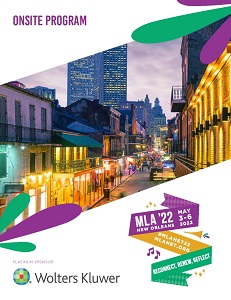Back
Lightning Talk: Program Description Abstract
Education
Session: Lightning Talk Session 1
Flipping Z Switch: Adapting Educational Practices for the New Generation
Thursday, May 5, 2022
2:30 PM – 2:35 PM CT
Location: 354
- RA
Rebecca Arriola
Research & Instruction Librarian
Midwestern University
Downers Grove, Illinois - CB
Colleen Bannon, MLIS
Reference & Instruction Librarian
Library
Presenter and Author(s)
Background: Despite being “digital natives,” Generation Z still requires the skills to critically evaluate information. With the introduction of Gen Z as the primary cohort in health science education we have noticed a change in student participation, educational expectations, and success with materials that have impacted the effectiveness of our teaching strategies. With less time in the classroom and this generation’s desire for hands-on learning, point-of-need instruction, and a desire to work alone, we moved beyond traditional lectures. Through generational profiling, trial and error, and increased technology due to the pandemic, the library has made several changes to our instructional toolkit.
Description: After trying different methods of online library instruction, we found a software that allowed us, on a learning curve time crunch, to evolve our one-dimensional recorded lectures into embedded, interactive tutorials in which students practice the skills necessary to complete course projects. These tutorials have also been implemented as a tool for flipped classrooms where we then use online tools such as polls and online bulletin boards to allow live, collaborative experiences during the follow-up in-person classes.
Conclusion: The instructional changes that have led, anecdotally, to more student interaction, increased librarian presence throughout our academic programs, and improved research skills. We have found that using online tools allows students to access material at the point-of-need outside of the classroom from any device. Additionally, we have noticed a decrease in last-minute reference questions before specific assignments are due.
Description: After trying different methods of online library instruction, we found a software that allowed us, on a learning curve time crunch, to evolve our one-dimensional recorded lectures into embedded, interactive tutorials in which students practice the skills necessary to complete course projects. These tutorials have also been implemented as a tool for flipped classrooms where we then use online tools such as polls and online bulletin boards to allow live, collaborative experiences during the follow-up in-person classes.
Conclusion: The instructional changes that have led, anecdotally, to more student interaction, increased librarian presence throughout our academic programs, and improved research skills. We have found that using online tools allows students to access material at the point-of-need outside of the classroom from any device. Additionally, we have noticed a decrease in last-minute reference questions before specific assignments are due.

.png)

